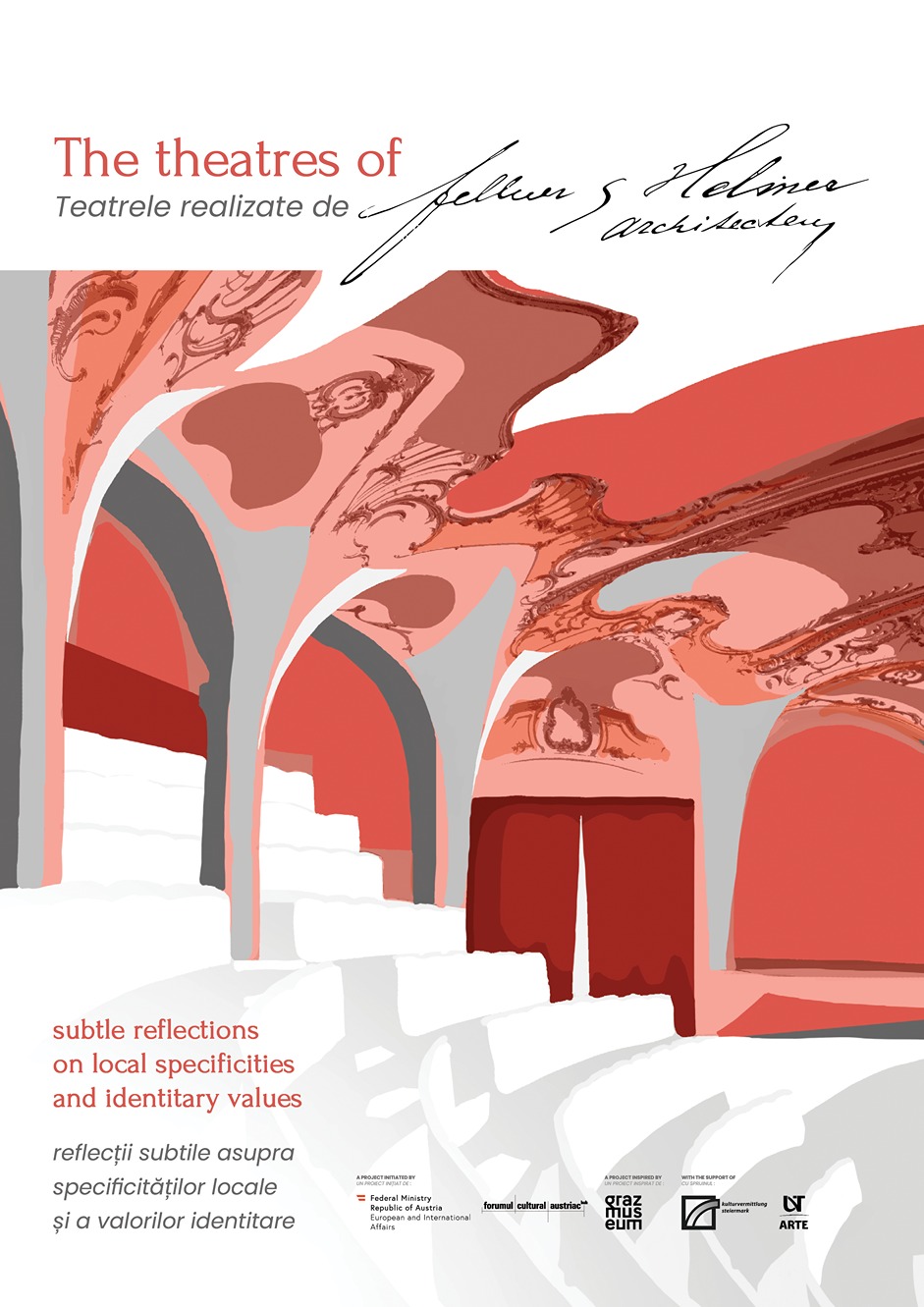Opening: 24 October | 17:00 – ODEON Theatre, Majestic Hall lobby
The exhibition can be visited as following:
20 October – 5 November 2023, only before the performances played at Majestic Hall, ODEON Theatre.

As part of NTF, the Austrian Cultural Forum presents ”Theatres by Fellner & Helmer. Subtle reflections on the local trademarks and identity values”, an exhibition imagined by the Romanian architect Loredana Stasisin as an original continental puzzle that showcases durable methods of administrating the cultural legacy.
Curator: Romanian architect Loredana Stasisin
Producer: Austrian Cultural Forum
Project done with the help of Mihai Eminescu National Theatre in Timișoara, the University of Arts and Design and West University, initially realised for Timișoara 2023 – European Capital of Culture.
When can we truly say that a theatre building comes alive? Can a historical monument stay up to date to current times even after a century since it was built? These questions are the starting point of an extensive research, at the initiative of the Austrian Cultural Forum in Bucharest, done by the Romanian architect and specialist of historical monuments Loredana Stasisin. She explored the secrets of 11 theatres built at the end of the XIX century and at the beginning of the XX century all over Europe, by the Austrian bureau of architecture run by Ferdinand Fellner and Hermann Gottfried Helmer.
The exhibition ”Theatres by Fellner & Helmer. Subtle reflections on the local trademarks and identity values” and the webpage https://www.fellner-helmer.theater/ open the doors to emblematic edifices in Graz, Vienna (Austria), Zagreb, Rijeka, Varazdin (Croatia), Budapest (Hungary), Cluj-Napoca, Iași, Oradea and Timișoara (Romania). Apart from the modern and successful architectural network (even today, being a century old), imagined especially to satisfy the cultural needs of the local communities, the works included in this original continental puzzle talk about the durable methods of administrating the cultural legacy.

